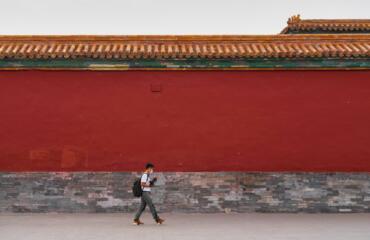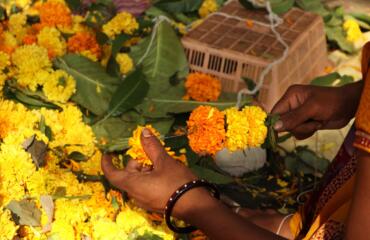Fenggang Li has practised his calligraphy in Beijing’s Xizongbu Hutong, for longer than he cares to remember.
“Don’t ask me how many years I have practised calligraphy, I must be much older than the people walking down the street,” said the 69-year-old as he worked away in his tiny shop.
In these streets and alleyways, lined with traditional courtyard residences, many like Mr Li continue to ply their craft while the city modernises around them. Until the mid 20th century most people in China’s capital lived in hutongs, but today only a few hundred remain, with many demolished to make way for high rise development and roads.
“I will never leave Beijing Hutong, this is my home,” Mr Li said.
In recent times, some of Beijing’s remaining hutongs have been protected from the relentless march of modernisation and have become a living museum of a more traditional way of life.
Xizongbu Hutong is one such place, where visitors can soak up the spirit of the old craftsmen and discover the hidden life and a slower pace amidst the hustle and bustle of the city.
“A lot of people like fashionable and beautiful bags. They say that I am out of date, but I don’t believe it. Many people come specifically for me,” said Jie Zhang, who has been making handmade leather bags in the hutong for 46 years.
“This is a culture that can’t be lost for many years. Even if the store is gone in the future, some people will make it in other places, and some will like it.”
In the Hutongs of Beijing, modern cafes and restaurants can be seen everywhere. Young people sit in the bright sunshine and taste delicious food from all over the world, and elders continue to insist on the value of craftsmanship and hard work, to pass on the traditional culture.














